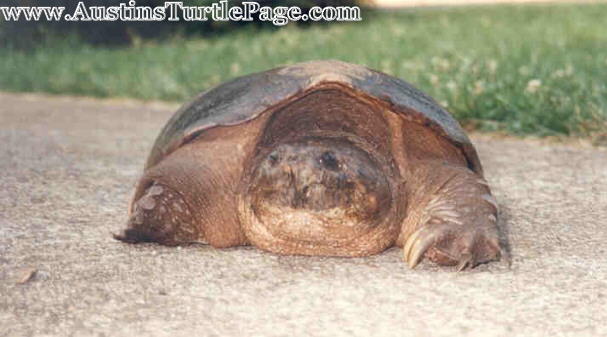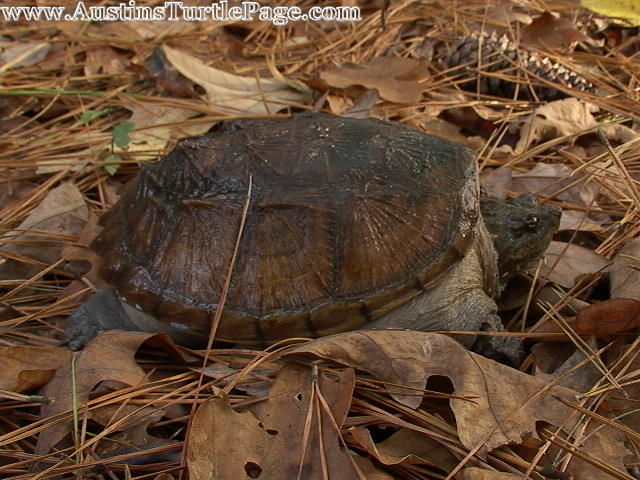By SnapperGreg
 |
 |
|
Pics provided by SnapperGreg |
Chelydra serpentina serpentina
Average 12 to 15in,
but up to 19in
Various fish, waterfowl, frogs,
snakes turtles, as well as water plants, wild apples, and acorns.
Usually best around 75 to 87 degrees. Common snapper
are extremely cold tolerant and are often seen moving under ice. Florida
snapping turtles, however, need warmer temperatures and arenít as cold tolerant
as common snappers.
Snapping turtles live in almost
every aquatic habitat in their range, including brackish and salt water. They
prefer slow moving shallow water, but can be found in deep lakes and rivers.
In North America, snapping turtles
live from Florida to Canada and west to Kansas. However, many individuals have
been found far outside their native range, so donít be surprised where you find
them.
No
Captive snappers need a large tank,
tub or pond with water deep enough for them to stretch their necks up to breath.
Also include a basking area, these turtles do occasionally bask. Include full
spectrum lighting as well as a heat light. Another important item is a secure
top to any cage; these turtles are excellent climbers!
Captive snappers can be fed any
cooked lean meat, preferably meats similar to their wild diets. Chicken, turkey,
fish are all excellent staples. Good supplements include earthworms, pinkies or
adult mice, and of course, Reptomin. Donít rely to heavily on Reptomin. They
will eat it every time, but as they get older not only can they consume a can of
the stuff in one sitting, but they will become stubborn to eating anything else.
Only hatchling snappers can be kept
in a community habitat. But even that is not advisable. Snapping turtles need to
be kept alone. Any snapper will eventually kill any turtle itís size or smaller.
You donít want a trail and error on this one.
Keeping snapping turtles is a true
commitment. As hatchlings they are probably one of the cutest turtles around. As
they get older and more aggressive, many people become dissatisfied in their
pet. As they become larger, they become more of a burden for many well-meaning
people. Really do your research and explore your options when looking into
getting ANY turtle.